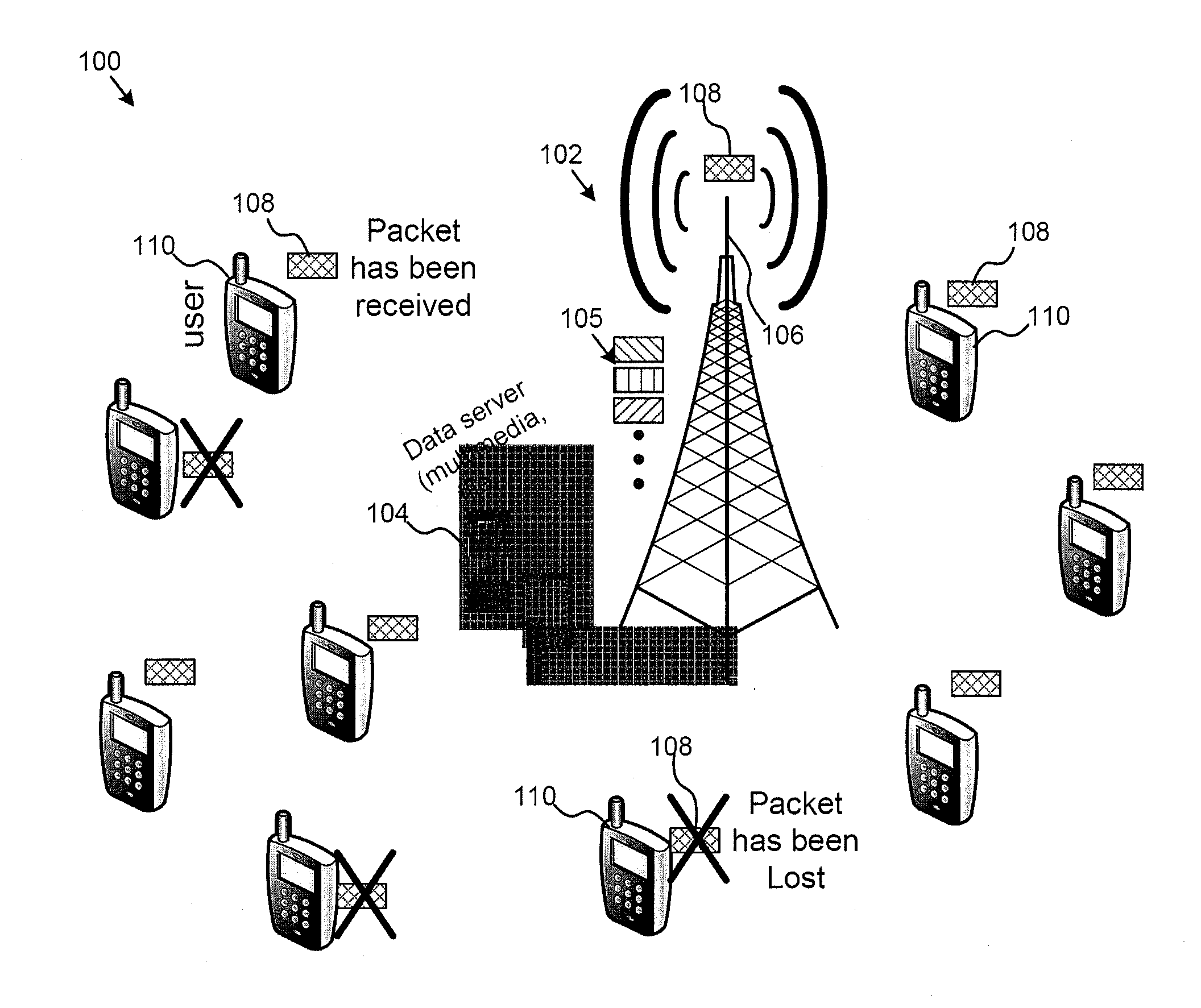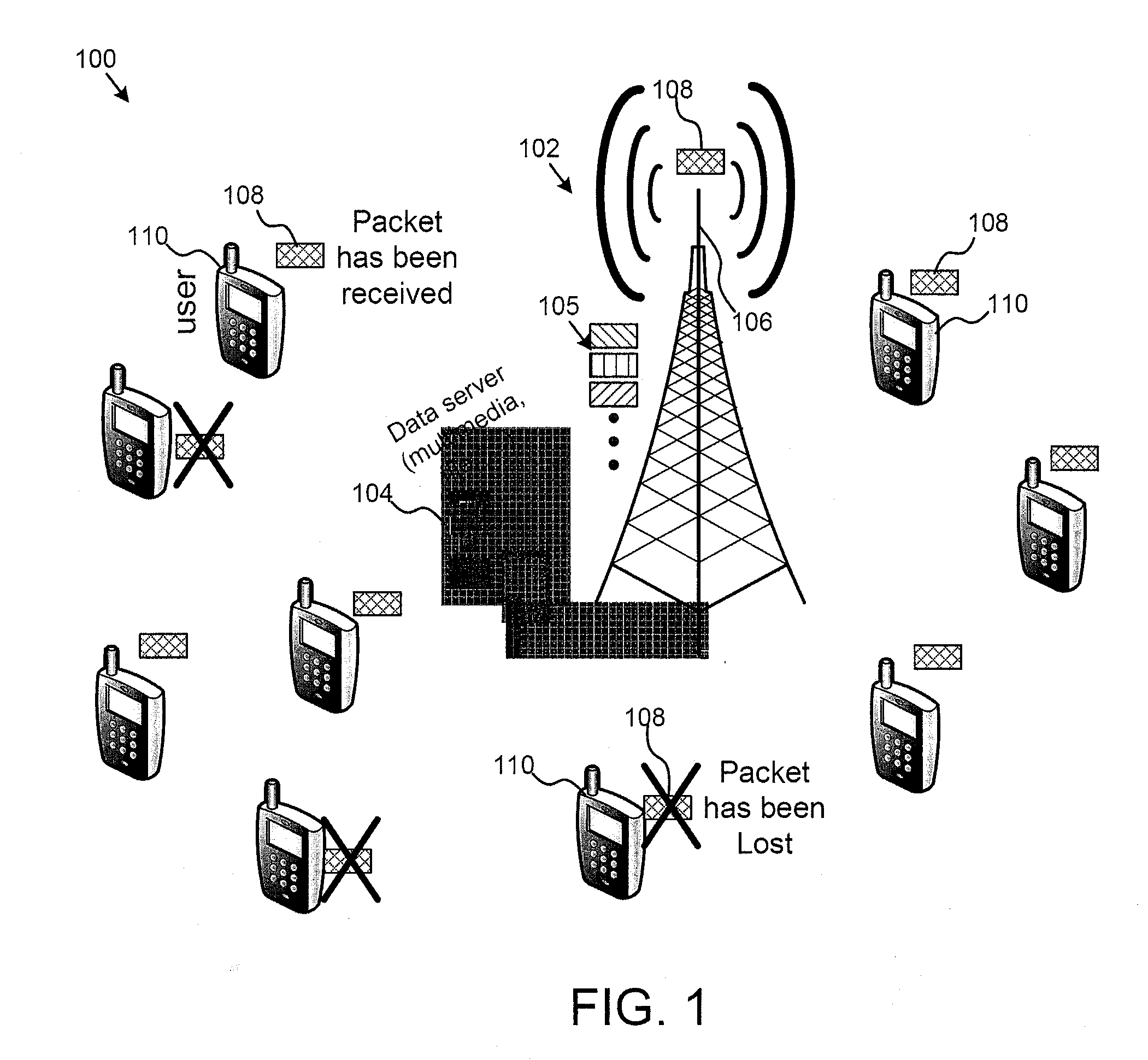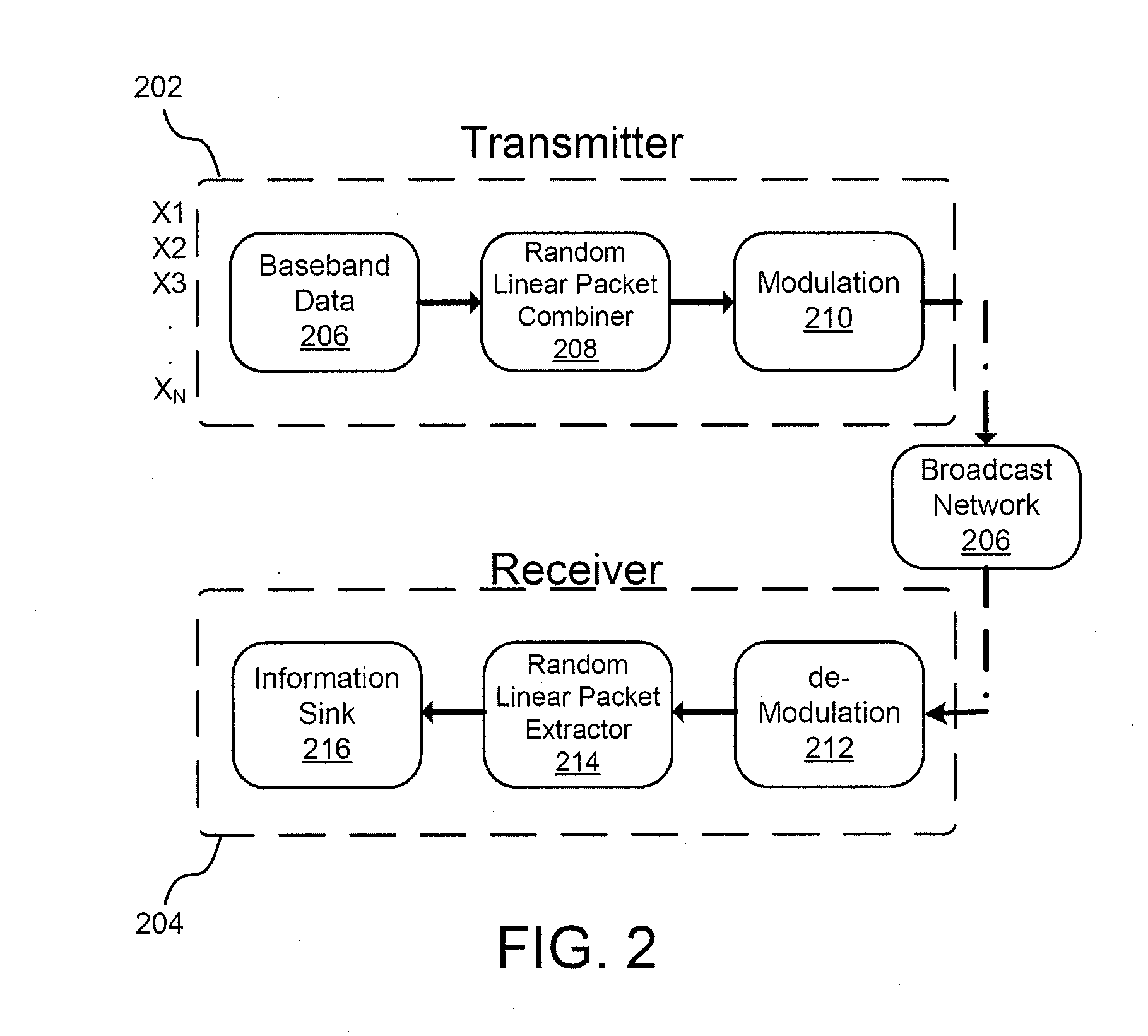Efficient broadcasting via random linear packet combining
a random linear and packet combining technology, applied in the field of data communication, can solve the problems of waste of valuable network bandwidth, incomplete data collection, and error in received data, and achieve the effects of reducing the cost and complexity of the receiver, reducing the cost of the receiver, and simplifying the decoding process
- Summary
- Abstract
- Description
- Claims
- Application Information
AI Technical Summary
Benefits of technology
Problems solved by technology
Method used
Image
Examples
Embodiment Construction
[0023]FIG. 1 is a schematic diagram illustrating one embodiment of system 100 for efficient broadcasting via random linear packet combining. System 100 may include base station 102 configured to broadcast data to broadcast network participants 110. In one embodiment, base station 102 may include data server 104 configured to store and provide data to network participants 110. In addition, base station 102 may include broadcast antenna 106. In various embodiments, base station 102 also may include baseband equipment, RF equipment, and additional equipment for data coding as described herein.
[0024]Base station 102 may convert one or more data packets 105 into encoded data packets 108 using random linear packet combining in accordance with embodiments of the invention. Base station 102 may then broadcast encoded data packets 108 to one or more broadcast network participants 110 located within a broadcast area. As illustrated, many of the broadcast network participants may receive the e...
PUM
 Login to View More
Login to View More Abstract
Description
Claims
Application Information
 Login to View More
Login to View More - R&D
- Intellectual Property
- Life Sciences
- Materials
- Tech Scout
- Unparalleled Data Quality
- Higher Quality Content
- 60% Fewer Hallucinations
Browse by: Latest US Patents, China's latest patents, Technical Efficacy Thesaurus, Application Domain, Technology Topic, Popular Technical Reports.
© 2025 PatSnap. All rights reserved.Legal|Privacy policy|Modern Slavery Act Transparency Statement|Sitemap|About US| Contact US: help@patsnap.com



